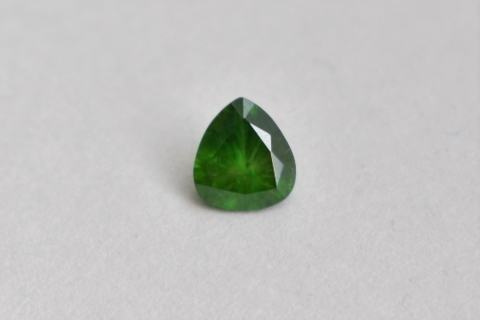I haven’t talked about emeralds for some time and with the Las Vegas Gem Show coming up I should do so, as I plan to focus a little more on this somewhat neglected stock item of mine. You will see more of the May birthstone listed this June - belated as is somewhat typical of me when it comes to birthdays.
So, let’s start with origins.
Colombia: my absolute favorite, always. They have the grassiest green color of all the greens, not minty, ranging from light to dark greens, with the medium warmish tones being the nicest. The lighter colors (often just termed “green beryl”) are more affordable but also need to be cleaner than the darker or they don’t look good. Supplies in Colombia, from what I understand, are actually pretty good, but well in the hands of the Colombian government and gems are being trickled out to keep the market tight. My source for these is Vinod Kotahwala, as previously disclosed, an AGTA member and wholesaler who has had connections to Colombia since the 1960s and his supplies are steady.

Light Green Colombian Emerald
Afghanistan: these have a very bright and happy green, very open color and don’t come in darker tones as far as I know. I can get these in small sizes only - those supplies are hard to get and they are very expensive at more than $1000/ct for even very small stuff. The good news is that I know a supplier who has a small amount of untreated ones – Dudley Blauwet. They come in small rounds and, some princess cuts.
 Afghanistan Emerald Princess Cut
Afghanistan Emerald Princess Cut
Zambia: Zambian emeralds have more of a minty green tone and they are not as warm as Colombian emeralds. They are also a little cheaper. I saw a really well cut parcel of lighter round stones this week that I was eyeing for a custom project which has since fizzled. It was going to involve Paraiba, yum. I have photos here of the project with lighter and darker Colombian emeralds. I could purchase some of these if anyone’s interested; sizes ranged from 4-5mm, prices were $700/carat. However, these are more heavily oiled (this is as far as I go with treatment).

Zambian Emeralds


Brazil: these are my least favorite in color because they are darker green and the inclusions are often darker piques as opposed to the whispy white feathers in Colombian material. However, these have the most typical emerald color seen on the commercial market. When I first started my Etsy business in 2009, clients on the internet were less informed than they are now and many didn’t want the Colombian color because it didn’t look like emerald, although fortunately, that’s changed now. Generally, I don’t buy Brazilian material but I certainly can upon request. It is cheaper than Colombian by about 1/3.
Treatment: there are two treatments on the market for cut stones that are employed to various degrees - Oil and Opticon.
Oil: traditionally Cedarwood oil was used, now it is often baby oil. Baby oil is a petroleum product and is therefore synthetic (sorry little babies) so that’s why sometimes lab reports are coming out as saying that emeralds have synthetic or modern treatment. For an acceptable treatment – in my opinion – the oil should not contain dye, and it should be lightly used – an AGL classification of “faint” or “insignificant” is ideal in my opinion. If I do go with a heavier use of oil I will disclose this and you’ll see either “lightly oiled” or “heavily oiled” in my description. The Zambian emeralds I saw had heavier oil. As to which oil is used, that is not something I can easily discern. Light oil is often used for safe storage as well, and almost all emeralds will show at least some residue. The most prized emeralds in terms of value should show minimal oil treatment in a lab report.
Opticon: this is a plastic polymer resin that is injected into the gem. It is permanent, unlike oil, but it can yellow with age. I never buy opticon treated emeralds, because I try to avoid treatment whenever possible. But it’s very common, it’s always disclosed (at least with AGTA members where it’s the rule) and if you are looking at any emeralds where you are not sure just ask.
Here’s a link to emerald treatments from IGS (International Gem Society) I thought was pretty good: https://www.gemsociety.org/article/just-ask-jeff-are-all-emeralds-treated-and-what-is-your-opinion/
For a more technical discussion, go to GIA for this article: https://www.gia.edu/gems-gemology/winter-1999-classifying-emerald-clarity-mcclure
Naturally, we currently stock some emeralds in the shop.
We have a lovely pair here

and some jewelry here

and here

And what about the little red sister of emerald, Bixbite? Stay tuned for listings and social media during our upcoming SALE.





















